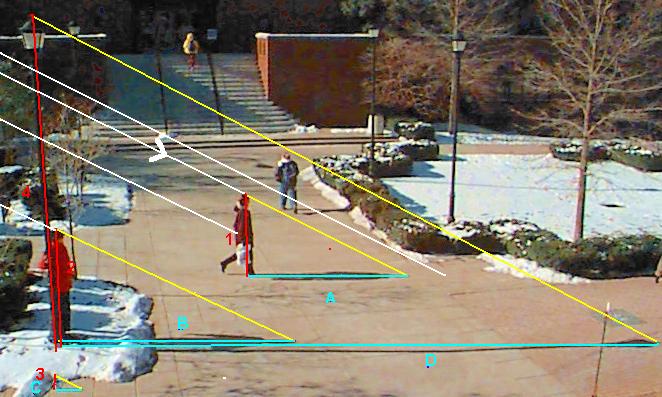
We have added lines to mark some objects and shadows in this picture to
clarify this activity. The white lines represent sunlight.
If you could follow these back up into the sky they would be coming straight
from the sun. When these lines of sunlight encounter an object
they don't go on through.
This causes a shadow to be cast on the opposite
side of the object. All the light in this picture is coming from the sun
and it's all travelling in the same direction. So, the shadows all
extend in the same direction away from the sun.
Bigger objects cast longer shadows and in a predictable way.
All because of the basic property of light that it travels in a straight
line.
The red lines highlight the height of objects, and light
blue lines mark their respective shadow lengths. The slanted yellow lines
result from connecting the top of the object with the top of its shadow.
Notice that the yellow lines are all parallel. Object, shadow, and
connecting line (hypotenuse) for every object form triangles of the same
shape.
So how big is that lamppost? Well, first we can say that it will
be smaller than its shadow length in this picture, because
each object in the picture is shorter than its shadow. There are
numerous ways to get more exact, for example by making a scale
drawing.
Hit the "back" button, please.
| Table of Contents Question board email |
| Copyright 2000 J. P. Straley and S. S. Kovash |